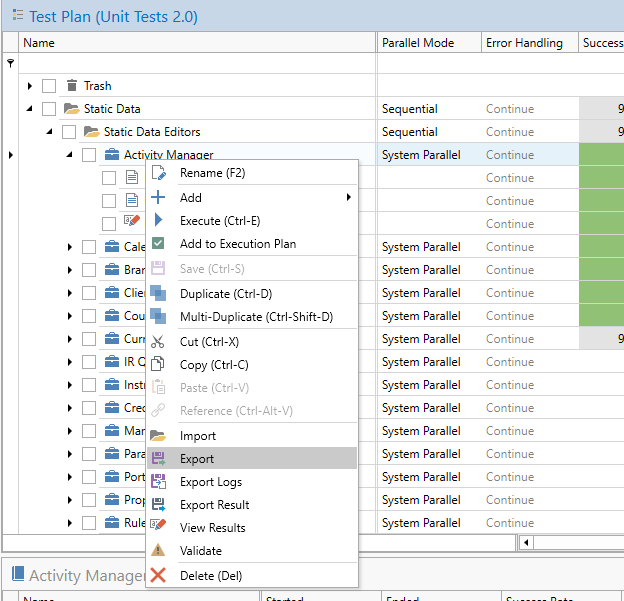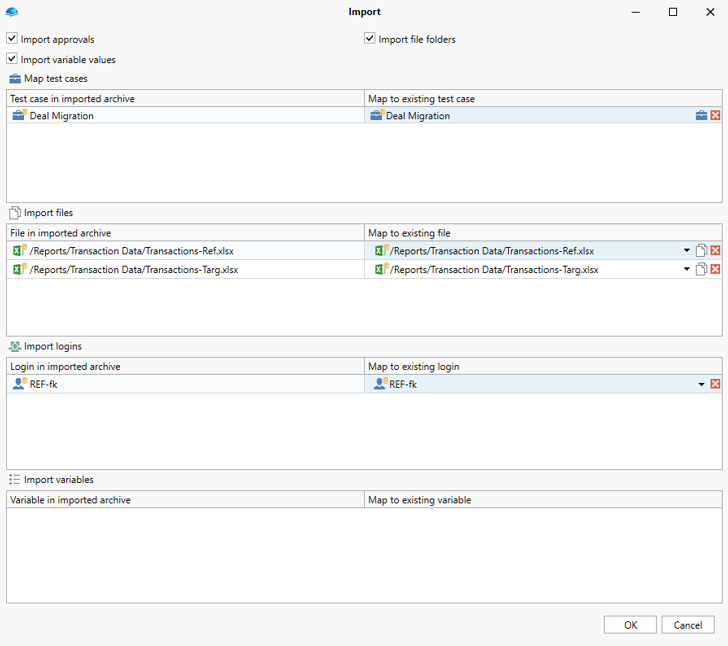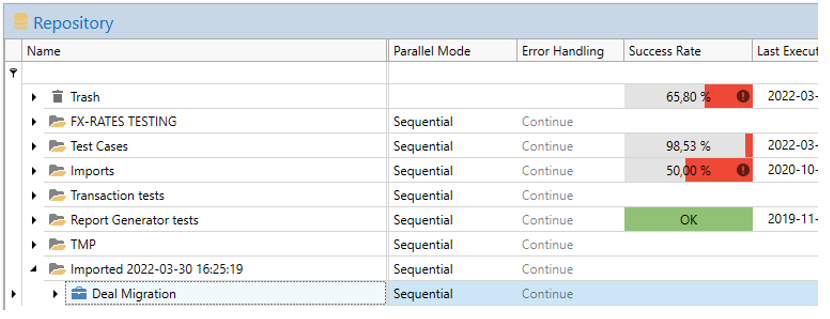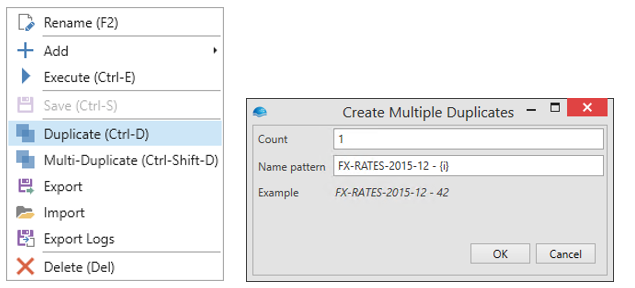Import, Export and Duplicate
Autotest allows exporting and importing parts of the test plan to zip archives. This is very useful to for example back up test cases, migrate configuration or moving between repositories.
Exporting
You can export any project, test case or group, by right clicking on it and selecting Export.

You will be presented with a dialog to save the archive. The exported archive includes:
- The group structure of the exported branch.
- Tasks in the exported branch.
- Tasks outside branch, that tasks in the branch depends on.
- Files used within the branch.
- Logins used in the branch.
- Reconciliation approvals.
If you are exporting from a Test Plan, any referenced Repository collateral is also included in the export.
Importing
To import an archive, right click on a group node you want to import the archive to and click Import. Select the archive file in the file dialog.
The Import dialog is presented.

The import dialog lets you select what to import.
Import approvals
If you leave import approvals checked, all approvals for each reconciliation task are imported.
If you uncheck Import approvals, only column tolerances are imported.
Import file folders
If you chose to import file folders, the full path of any files imported from the archive are recreated in the current repository and test plan. If you uncheck this option, any files imported are placed on the root.
Map test cases
The Map test cases section shows all test cases included in the archive, with options to map to existing test cases in the current repository. The suggested mapping is based on test case name.
It is strongly recommended to give test cases in the repository unique names. Doing so allows the application to identify that a test case in the archive already exist in the repository and suggest a mapping. This allows you to import multiple batches of test case references without duplicating the underlying test case. To remove a mapping, click the x-icon.
Import files
The Import files section shows all files present in the archive. If you import several archives from the same source, the current repository likely contains some of the files in the archive already. To avoid creating duplicates, you can map a file in the archive to a file. Files that are mapped are not imported from the archive, instead any reference to the file in the archive is changed to point to the existing file.
If there are files in the repository or test plan with similar enough name (full path) they are added to the drop down in Map to file. If any single file is named exactly the same as an imported one, it is selected automatically.
You can choose freely any file in your workspace by clicking the document icon. To remove a mapping, click the x-icon.
Import logins
The Import logins section shows all logins present in the archive. If you import several archives from the same source, the current workspace likely contains some of the logins in the archive already. To avoid creating duplicates, you can map logins in the archive to existing logins.
To map a login in the archive to one of the existing logins, select the appropriate login using the Map to login drop-down. To remove a mapping, click the x-icon.
Import repository collateral
When exporting from Test Plan, any Repository collateral used is also included in the archive. When importing such an archive to a new Test Plan, the collateral that originated in the repository will be imported into the new repository. Because the precise location of the repository collateral isn’t known when importing, the imported repository collateral will be placed in a new time stamped folder.

From this location you can sort it into your preferred repository organization.
Duplicate
If you simply want to make a local copy of a node you can duplicate that node by right-clicking on it and selecting Duplicate from the context menu (or use the keyboard shortcut Ctrl-D).

If you want to make several copies at once, you can select Multi-Duplicate (or use the keyboard shortcut Ctrl-Shift-D).
Export logs
You can export execution log files into a zip container for archiving and audit purposes.
See Exporting logs for more information.
Updated 8 months ago